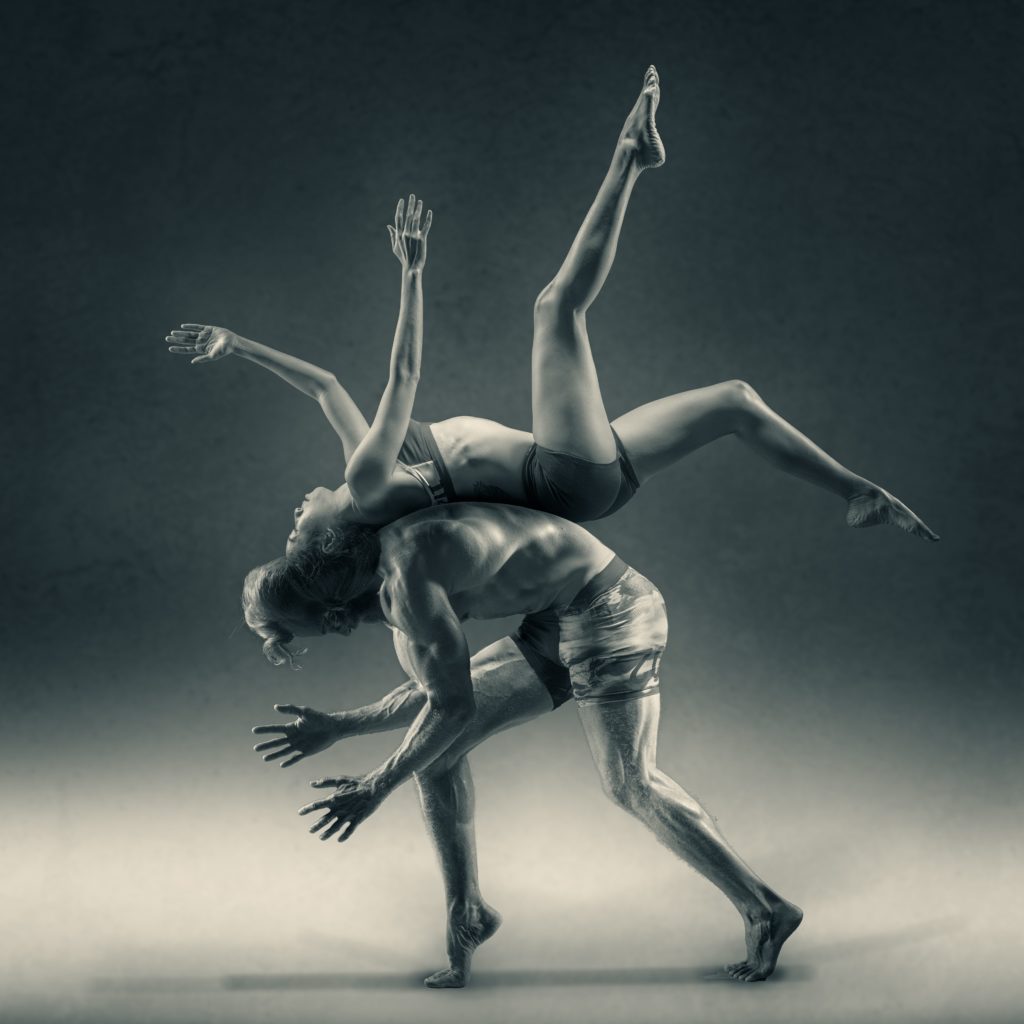Parts of the body are among the first things children learn when they start to speak. When we learn a new language, however, it might take some time before we can really describe our bodies as well. In this post, we’re here to overcome this and get you talking about all our body parts in Spanish!
While you probably already know how to name a few parts of the body in Spanish, how specific can you go? There’s obviously a lot of Spanish vocabulary to consider here! This post will break things down into manageable lists, so you can easily focus on the body parts in Spanish for each region of the body. We’ll stick with external body parts.
Once we’ve covered the vocab, we’ll look at some essentials when it comes to talking about the body in Spanish. Finally, we’ll finish up with a bunch of fun Spanish expressions that mention the parts of the body you will have learned by then.
Let’s dive in!
Spanish Body Parts: Head
Here are the basics for talking about the head in Spanish:
| Head | La cabeza |
| Face | La cara |
| Eyes | Los ojos |
| Nose | La nariz |
| Mouth | La boca |
| Ears | Las orejas, Los oídos |
| Hair | El pelo, El cabello |
Now here are a bunch of the smaller details about the head in Spanish:
| Skin | La piel |
| Pores | Los poros |
| Forehead | La frente |
| Eyebrows | Las cejas |
| Eyelashes | Las pestañas |
| Eyelids | Los párpados |
| Dark circles under the eyes | Las ojeras |
| Nostrils | Las fosas nasales |
| Lips | Los labios |
| Teeth | Los dientes |
| Cheeks | Las mejillas, Los cachetes |
| Cheekbones | Los pómulos |
| Jaw | La mandibula |
| Chin | La barbilla |
| Neck | El cuello |
| Beard | La barba |
| Mustache | El bigote |
| Sideburns | Las patillas |
Spanish Body Parts: The Torso
Here are the words you need to know for talking about the upper body in Spanish. We’ll include the hip area on this list too:
| Torso | El torso |
| Shoulders | Los hombros |
| Back | La espalda |
| Pectorals | Los pectorales |
| Chest | El pecho |
| Breast | El seno |
| Nipples (male) | Las tetillas |
| Nipples (female) | Los pezones |
| Navel, Bellybutton | El ombligo |
| Belly, Abdomen | El vientre |
| Belly | La barriga |
| Waist | La cintura |
| Hips | Las caderas |
| Buttocks | Las nalgas |
| Butt | El trasero |
Spanish Body Parts: Arms and Hands
Here are the words for talking about the arms and hands in Spanish:
| Arm, Upper arm | El brazo |
| Armpit | La axila |
| Elbow | El codo |
| Forearm | El antebrazo |
| Wrist | La muñeca |
| Hand | La mano |
| Palm of your hand | La palma de la mano |
| Knuckle | El nudillo |
| Thumb | El pulgar |
| Finger | El dedo |
| Index finger | El dedo índice |
| Middle finger | El dedo medio |
| Ring finger | El dedo anular |
| Little finger | El dedo pequeño |
| Pinkie | El meñique |
| Fingernails | Las uñas de las manos |
Spanish Body Parts: Legs and Feet
Here’s your vocab list for talking about the legs and feet in Spanish:
| Leg | La pierna |
| Thighs | Los muslos |
| Knee | La rodilla |
| Calves | Las pantorrillas |
| Ankle | El tobillo |
| Foot | El pie |
| Heel | El talón |
| Sole of the foot | La planta del pie |
| Instep | El empeine |
| Toes | Los dedos de los pies |
| Toenails | Las uñas de los pies |
How to Talk About Parts of the Body in Spanish
In contrast to English where you usually use possessive adjectives to talk about someone’s body parts, in Spanish we generally use definite articles. Let’s see this in more detail.
Definite articles when we know whose body parts they are
In most cases, we only use definite articles to talk about body parts in Spanish, since we already know whose body parts we’re talking about. This is especially true with reflexive verbs to reduce redundancy.
- My back hurts. – Me duele la espalda.
- My eyes are brown. – Tengo los ojos marrones.
- My hands are big. – Tengo las manos grandes.
- My feet hurt. – Me duelen los pies.
- Your hands are bigger than mine. – Tienes las manos más grandes que las mías.
- My sister only shaves her legs in the summer. – Mi hermana solo se depila las piernas en verano.
Possessive adjectives to be clear on whose body parts they are
If the context doesn’t already make it clear whose body parts we’re talking about, whether through the use of a specific verb conjugation or through the use of personal pronouns, we can use possessive adjectives.
- These shoes are small for my feet. – Estos zapatos son pequeños para mis pies.
- My skin is very sensitive. – Mi piel es muy sensible.
- Her teeth are so white. – Sus dientes son tan blancos.
- These gloves are perfect for your hands. – Estos guantes son perfectos para tus manos.
- I don’t know what to do with my back. It hurts a lot. – No sé qué hacer con mi espalda, me duele mucho.
- I think these jeans look better on Susana, because of her wide hips. -Pienso que estos jeans le quedan mejor a Susana, por sus caderas anchas.
Remember, as we saw in the previous section, that possessive adjectives should never be combined with reflexive verbs. Check our related posts for full-on explanations of both possessive adjectives and reflexive verbs.
Left and right for pairs
This one’s pretty easy, but we’ll mention it anyway just to be clear. Just as in English when you talk about your left and right body parts, we do the same in spanish: izquierda y derecha.
- Raise your right hand if you speak Spanish. – Levanta tu mano derecha si hablas español.
- Raise your left foot if you raised your right hand when reading the previous sentence. – Levanta el pie izquierdo si levantaste la mano derecha al leer la frase anterior.
A little humor never hurts!
Common Spanish Expressions That Mention Body Parts
Now that you’ve learned a bunch of the body parts in Spanish, would you like to learn some expressions where you’ll recognize your new vocabulary? Not all of these are necessarily to be taken literally, but they’re all pretty good for practicing what you’ve just learned!
- Turning a deaf ear. – Hacer oídos sordos.
- She has a big mouth, don’t tell her your stuff. – Ella tiene la boca grande, no le cuentes tus cosas.
- Can you give me a hand? – ¿Puedes darme una mano?
- Wash your hands before eating. – Lávate las manos antes de comer.
- I have a headache. – Me duele la cabeza.
- I have something in my eye. – Tengo algo en el ojo.
- I’m not going for a run today. My feet are killing me. – No voy a salir a correr hoy. Mis pies me están matando.
- You have to stand up. (You have to show your face.) – Tienes que dar la cara.
- I am up to my neck in debts. – Estoy hasta el cuello de deudas.
- I am all ears. – Soy todo oídos.
- Put your right hand on this book. – Pon tu mano derecha sobre este libro.
- You must be wise. (You must think with your head.) – Debes pensar con la cabeza.
- We need to think this through. (We must put our heads to this.) – Hay que ponerle cabeza a ese asunto.
- Don’t go putting ideas into his head. – No vayas a meterle ideas en la cabeza.
- Love can make you lose your mind (your head). – El amor puede hacer que pierdas la cabeza.
- We must look to the future with good eyes. – Hay que ver al futuro con buenos ojos.
- Beauty is in the eye of the beholder. – La belleza está en el ojo del que mira.
- I can’t take my eyes off you. – No puedo apartar mis ojos de tí.
- Lingohour is by word of mouth. – Lingohour está de boca en boca.
- This comes in handy. (This fits perfectly like a ring on my finger.) – Esto me viene como anillo al dedo.
- Brush your teeth. – Cepíllate los dientes.
- I cut my finger. – Me corté el dedo.
Conclusion
Well that just about does it for this post on body parts in Spanish. You now have a ton of vocabulary about our bodies! We recommend checking out our other specific post on describing physical appearance in Spanish, where some of your new vocab will surely come in handy.
The bulk of this post was on body part vocabulary in Spanish, broken down into manageable lists by regions of the body. It was a lot at once, so feel free to bookmark this page and come back to our vocab lists for reference.
We also saw the basics on how to refer to someone’s body parts in Spanish, whether using definite articles or possessive adjectives depending on if it’s clear whose body part it is. Once we had all the body parts straight, we gave you a fun list of common expressions and phrases that reference all this new body-specific vocab.
Finally, we’ll refer you to another useful post, with the suggestion that you use this new knowledge on body parts to give people “piropos”: compliments in Spanish!




